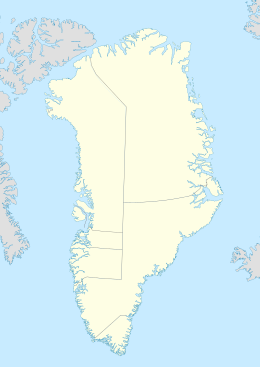|
Devil Island (Greenland)
Devil Island (Danish: Djævleøen) is an uninhabited island of King Frederick VIII Land, NE Greenland. HistoryThe island was named Djævleøen, meaning "Devil Island",[1] by the 1932 Gefion expedition. It had been previously also known as "Teufelkap Island" —a name used by Georg Carl Amdrup in 1913— because of the Teufelkap, its conspicuous eastern headland that had been previously named by the Second German North Polar Expedition led by Carl Koldewey.[2] The curved horse-shoe shaped northern part of the island was named Hestefoden by the 1906–08 Danmark expedition, because the devil (Danish: djævle) is often represented as having hooved feet.[3] GeographyThe island lies in the southwestern area of Dove Bay. To the north lie the Licht Islands and to the west Godfred Hansen Island. To the south lies Nanok Island, separated from Djævleøen by the A. Stelling Sound, and further south Tvillingerne.[4]
Bibliography
See alsoReferences
External links |
|||||||||||||||||||||||||||||||
Portal di Ensiklopedia Dunia

